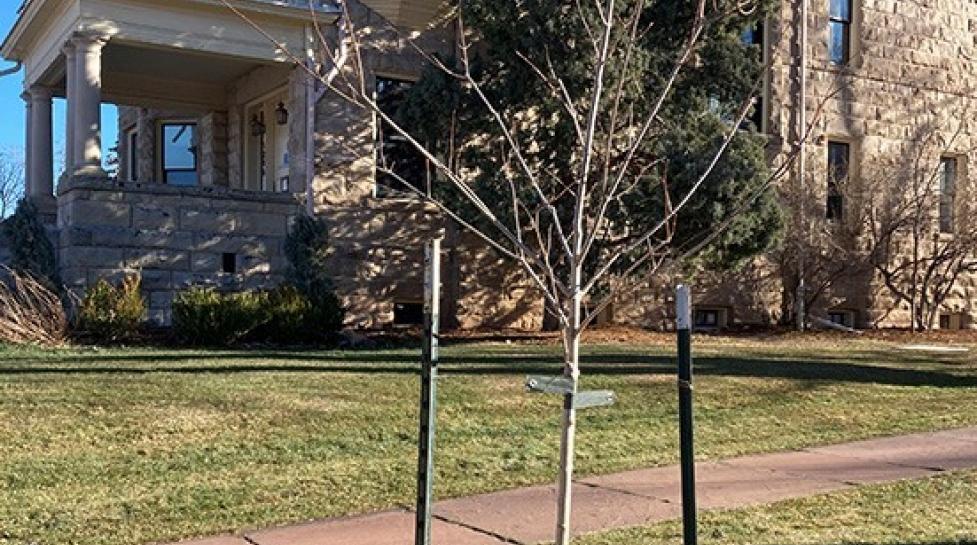The recent snowfall and rain in the City of Boulder were nowhere near enough to help the thirsty trees in the city, so watering your trees this winter is crucial.
The recent snowfall and rain in the City of Boulder were nowhere near enough to help the thirsty trees in the city, so watering your trees this winter is crucial.
Our region is naturally a semi-arid, shortgrass prairie that would have few trees without irrigation. Properly placed and maintained trees are an asset to the environment and our community and are critical to mitigating climate change. Urban trees draw down carbon, create shade to cool heat islands, intercept stormwater to reduce flooding, improve air quality and public health, and can create economic opportunities.
“Every tree plays a critical role in mitigating climate change,” said Forestry Manager Kathleen Alexander. “The current dry conditions are threatening the health of our trees. We recommend you water them this season to help them through this incredibly dry fall.”
Trees most at risk from dry winter conditions include:
- recently planted trees,
- evergreens like pines, spruce, and white fir, and
- shallow-rooted deciduous tree species such as maples, poplars, and lindens.
Damage from a lack of winter watering may not show up until next spring and could include branch dieback, reduced leaf size, chlorosis (yellowing of leaves), or trees dying. Winter drought conditions may also stress trees which could make them more susceptible to attack from insects like the Ips beetle.
Here are some winter watering tips to help your trees:
- Water when the air and soil temperatures are above 40 degrees Fahrenheit with no snow on the ground.
- Water early in the day to allow the water to soak in before freezing night temperatures.
- Do not water frozen soil.
- Water once or twice a month with 10 gallons of water per inch of tree trunk diameter. Newly planted trees generally need 10 to 20 gallons of water.
- A slow, deep soak reaches the fine, feeder roots that are 4-8 inches below the soil surface. Water at the tree’s “dripline,” which is the outermost circumference of the tree branches. Hand watering, a soaker hose or drip applications are best. You can also use water-filled, five-gallon buckets with holes in their base or coolers with open drain nozzles.
- Leave your irrigation system off during the winter months to prevent frozen and broken equipment.
- When we do get snow, shovel any clean snow from sidewalks and driveways to the area around the dripline of your trees (not the tree trunks). The snow will insulate tree roots and the melting snow waters your tree!
- Melting snow can carry deicers and any other pollutants into storm drains, so let’s protect our streams by shoveling snow onto vegetated areas and minimizing the amount of deicer you use at home.
- Place two to four inches of wood chip mulch from one inch away from the base of the tree out to the dripline to retain soil moisture. Free mulch is available to community members from Western Disposal at the city mulch pile on Pearl Parkway between 49th and 55th Streets.
For more information on tree watering and overall tree care, check out the tree care and watering information on the city’s website.
Keep Reading
News keep reading
-
Your Guide to Earth Day in Boulder
-
Boulder Parks and Recreation to Swap Rec Center Shutdown Dates to Accommodate Short-Term Work at South Boulder Recreation Center
-
State of the Urban Forest 2025 Provides Update on Urban Canopy
-
Parks and Recreation Implementing the Court System Plan Through Projects at East Boulder Community Park and Tom Watson Park
